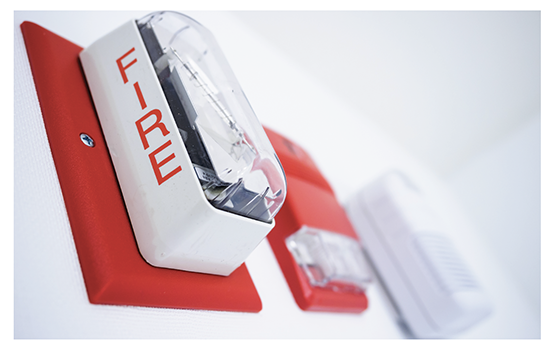Understanding Retroactive Residential Fire Alarm Requirements in San Diego

Information and tips from local fire alarm experts, Bay Alarm Company
Over the past two years, the City of San Diego has started enforcing new updates to its local fire code. These updates apply retroactively to certain buildings constructed before January 1, 1975. Some owners of multi-family buildings have received notices about how their buildings fall under this new code.
At Bay Alarm, we’re working with customers who received this notice to update their systems. Keep reading to learn if your building falls under the new code—and what to do if you receive a notification.
Not all multi-family buildings fall under this new code.
The affected structures were built before January 1, 1975, and meet the following criteria:
- Every apartment house 3 or more stories in height or containing more than 15 apartments
- Every hotel or motel 3 or more stories in height or containing 20 or more guest rooms
There are exceptions—so not every property owner that meets the above requirements will need to act. You can visit the City of San Diego’s development services website to learn more.
Fire code enforcement is because of concerns about occupant safety.
In the case of San Diego, the city amended the code, and the fire department is enforcing the new requirements to keep occupants safe. We know from experience that the best way to prevent injury is a fire alarm system with an early notification system.
In the Summer of 2021, one of Bay Alarm’s retroactive fire alarm systems saved the lives of an entire apartment complex. The low-frequency sounders in each living room and bedroom woke residents in the middle of the night so they could safely evacuate from an active fire.
Because local authorities enforce fire codes, the level of enforcement varies by city.
In California, the California Fire Code governs where and when a fire alarm system is installed. Then, NFPA 72®, the National Fire Alarm Code®, developed by the National Fire Protection Association® (NFPA), provides details on howto install the system.
The California Fire Code sets the minimum standard for every occupancy in California. However, enforcement falls to local governments, so the level of enforcement can vary significantly. In this case, the City of San Diego amended the California Fire Code to retroactively enforce the code on multiple-story buildings that existed before January 1, 1975.
Local fire departments usually handle local enforcement.
In many cities, including San Diego, the fire departments are the local Authority Having Jurisdiction (AHJ) that enforce fire codes.
According to the City of San Diego Fire-Rescue Department, owners must retrofit affected buildings with automatic or manually operated fire alarm systems that warn all occupants at the same time. And visual and audible notification is required throughout the building, per the current edition of the California Fire Code.
Receive a notice? Hire a professional fire alarm contractor to upgrade your fire alarm system.
If your building needs a new or updated fire alarm system, you’ll want to use someone familiar with state and local fire codes. A fire alarm provider should offer the following services:
- Fire alarm system design
- Fire alarm system permitting
- Fire alarm system installation
- Regular system service and maintenance
- Annual inspections and semi-annual inspections when required for specific devices
You should also consider companies that offer fire alarm monitoring, a service where a team of agents monitors your fire alarm system 24/7, and who can contact emergency services in the event of a fire alarm activation.
Make sure your contractor has local knowledge and knows the local authorities.
Local experts are more likely to know how to get your building up to code and often have a close working relationship with the local AHJ. With a local fire alarm provider on your side, you can get in compliance, enjoy quick access to technical support, and schedule annual inspections to ensure the system works as it should.
Designing, permitting, and installing a compliant fire alarm system can be a lengthy project. However, the City of San Diego Fire-Rescue Department and other departments give adequate time for installing a new fire alarm system once work begins. In our experience, once an inspector sees that a professional fire alarm installer has initiated the permitting process, and a project number has been provided, they will sign off on the inspection. However, an implementation plan may be required.
Price shouldn’t be the only priority when selecting a company to install your fire alarm system.
The price of the project will depend on building size and occupancy type. However, because fire codes are standard across one jurisdiction, quotes are based on similar parts and labor, no matter the company.
Be wary of any company that offers bids notably lower than competitors. They may not fully understand the fire code and how to get your building in compliance. For example, the code does not specify how many sounders are required in a residential space. However, in our experience, there should be one sounder in each living room and bedroom to achieve the appropriate decibel rating.
Bay Alarm is here to help San Diego multi-family property owners.
Want more information about retroactive fire codes in San Diego? Talk to a licensed C-10 fire alarm contractor that can design, permit, and install a fully compliant fire alarm system.
Alec Barton-Bareno
Enterprise Sales Representative
Bay Alarm Company
858-209-7859 | Alec.Barton@bayalarm.com



